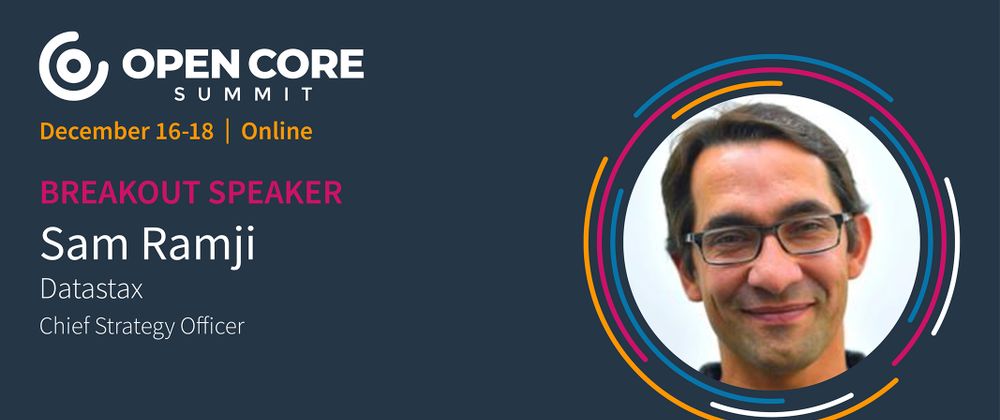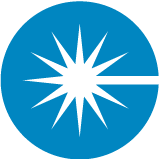Sam Ramji is a 25-year veteran of the Silicon Valley and Seattle technology scenes, Sam led Kubernetes and DevOps product management for Google Cloud, founded the Cloud Foundry foundation, has helped build two multi-billion dollar markets (API Management at Apigee and Enterprise Service Bus at BEA Systems) and redefined Microsoft’s open source and Linux strategy from “extinguish” to “embrace”. He is nerdy about open source, platform economics, middleware, and cloud computing with emphasis on developer experience and enterprise software. He is an advisor to multiple companies including Dell Technologies, Accenture, Observable, Insight Engines, and the Linux Foundation. Sam received his B.S. in Cognitive Science from UCSD in 1994 and is still excited about artificial intelligence, neuroscience, and cognitive psychology.
Relevant Links
LinkedIn - Twitter
Joseph Jacks and Sam Ramji discuss positive sum games, open source strategy as applied to Microsoft, and thoughts on an open source career!
One of your core tenets seems to be kindness. How important is kindness in open source? — 0:20
Sam speaks about kindness in evaluating his own past experiences, the altruistic spirit of kindness, and how this relates to the economic disruption of open-source which is a positive-sum game. “This lets the quant line up with the qual, and the edges can be softer.”
Who was Richard Feynman, and why did he make such an impression on you? — 2:15
Sam speaks about Richard and Richard’s influence. “By being such a humble, curious character, he was able to look at anything and see it as something new and fascinating and explore it from the inside out. Not starting with how other people conceptualize this, but how do I have first-hand knowledge of it? And then after having formed my own hard-won opinion by doing the work, how can I contrast it with whatever’s around me and take action on it?”
Feynman, after winning Nobel prize: “The prize is in people finding my work to be useful. That’s the real prize. I have a limited intelligence, and I use it in a particular direction.”
What was it like studying cognitive science? What led to cog sci, what fundamental things did you learn there that have shaped your career?— 4:40
Sam details starting programming at 9 years old. Didn’t think about career in computers, expected career as a doctor. As a general education elective, took cognitive science, and found it fascinating.
Didn’t want to do CS because he already knew how to program. “Brain wasn’t strong enough to be a doctor.” Ended up in cognitive science department.
Speaks about how programs are bucketed in university programs and his experience at UCSD, where computer science was under electrical engineering, whereas cognitive science and AI were under social science.
Sam explains UCSD’s interdisciplinary approach to cognitive science.
(JJ covers Sam’s career path, from software engineer to go-to-market and product management, with an intense thread around strategy.) What are the observations and key lessons you’ve learned over that career arc that would be useful for others interested in embarking on the same journey? — 7:56
“The common thread for me all the way through is, it’s all about distributed cognition.”
Sam details how “thinking about thinking” turns into “thinking about thinking together”, which turns into curiosity and collaboration. That’s why kindness is so important — when working with others, to be authentically curious about what they’re doing. Then to start asking, how does that connect to something I’ve seen or someone I’ve know? And that becomes a lot of leverage for everybody.
“Curiosity, and kindness, and collaboration, and those things being connected.”
Sam talks about “design itself as the master discipline for our times.” Across different roles, the most important question isn’t “how”, but the design and “why are we doing this.” Coming back endlessly to it.
“Everybody can give themselves to permission, be kind to themselves, and say yes I am a creative person, and I design in this particular way, and start to envision yourself as a designer and creator, no matter how narrowly, will start to give you more self-permission and give you more obvious avenues to do the next smart thing.”
JJ summarizes Sam’s thoughts on curiosity and the importance of “why” before “how.”
Sam speaks about Feynmann and curiosity. “He created structures in his life that gave him permission to be curious.”
“Look at the people you admire. They didn’t start that way, they created structures in their life that gave them permission to relabel and reimagine what they do. If you give yourself permission, you’ll end up in a place that’s really satisfying for you.”
(JJ gives context of Sam’s role as a champion of open source, including helping Microsoft’s evolution of perspective on open source). What was it like to drive open-source leadership at Microsoft? How do you think Microsoft has been able to radically change their trust and accountability in the open-source world over the last 10 years? — 14:30
Sam shares an anecdote from the founder of Walmart. “If you work hard every day, in 20 years, you might become an overnight success.”
Speaks about the story of two Bills (Bill Gates and Bill Hilf). Tells the story of Bill Hilf, how Hilf took Sam’s ideas on importance of open-source for Microsoft’s future, and offered Sam a job: “Work for me, lead open-source technology strategy for Microsoft, and every quarter brief the other Bill (Gates) on open-source.”
Sam accepted the job, details the team around him in that role, and experience/process of briefing Bill Gates.
Describes how Bill used Sam’s open-source work as a sharp stick to force Microsoft to rapidly innovate and look outside.
Describes last meeting with Bill, a week before he retired, culmination of a 9-month interdisciplinary project — evaluating IP, and processes, in order to work with open source and contribute to it — and Bill’s insistence in that meeting to embracing open source for Microsoft’s future. “That was the seminal moment where everything changed.”
“A year later, that enabled us to contribute a ton to Linux … and that was icebreaking.”
Sam speaks about many people buying-in to the idea, and the eventual adoption of open source at the company.
In 2009, they created the IP basis and the tech basis. Then, it was just a matter of time until Microsoft would adopt open source (really in 2014).
There’s lots of talk about open interfaces and open core. What are the tradeoffs with these two approaches? — 23:40
“There’s a third element, which is how to open source open interfaces work.”
Sam speaks about importance of easy communication around development of open interfaces. “If it isn’t coupled with open source, it’s a one-way relationship. You can read the docs, you can’t write the docs.”
“When you combine the two, it has to be for a purpose, and that’s when you can do industry shaping.”
Sam details what led to the Open Cloud Initiative, and the importance of making standard interfaces open source.
“Open source is about having an architecture for participation.”
“There is a sense of serendipity that shows up when you are bringing an open approach and you’re using open interfaces and you’re using open source. Anything could happen, but because the world is rational, the right things will end up happening, often what you couldn’t have expected. If you’re participating in those open communities, you will be riding shotgun, and you will have best access to seeing how the world is changing. Whether its curiosity or economic activity, access to that information is a godsend.”
Sam speaks about positive-sum learnings from book Non-Zero by Robert Wright. “There has to be a new political organization that evolves, so that you can call more people ‘self’ than ‘other’, so that you want to play these positive-sum games with them.”
“It’s that human tendency, am I going to be in a state of fear or trust? If you can find out how to flip that switch in yourself and others, everybody can get much better outcomes for what they’re trying to do.”
What has been the cause, or causes, of the exponential growth and success of open source? What do you think the future holds for open source in the next five or ten years? — 31:12
Sam references Nicholas Negroponti accounting of “physical” and “digital.” The massless, instantaneous, non-rival properties of bits.
“As you move from physical to information pursuits, you get so much leverage when you’re moving things in bits and information and ideas behind humans.”
“This is about the increasing the intelligence of behavior in any sphere.” Could be writing data to disk, processing medical health records, anything we do as humans.
Describes the arc of open source, starting in the 80s focused on low-level horizontal computing structure. “Takes a generation for something to become obvious. We’re there now with open source.”
In the next 5-10 years, Sam expects to see further vertical penetration into deeper and older domains of human behavior that we might call “industries.”
“The companies that start asking in an open-source will outperform the ones who are taking zero-sum approaches, so the base as a competition will change, in a way that makes people focus on open source as a basic expectation.”
Share your questions and comments below!



Top comments (0)